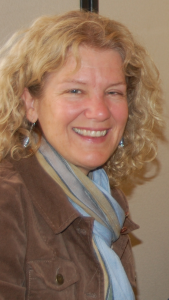
Linda Egenes
My friend Linda Egenes authored Visits with the Amish: Impressions of the Plain Life and co-authored four other nonfiction books. Her most recent release, coauthored with Kumuda Reddy, M.D., is Super Healthy Kids. Linda holds an M. A. in Professional Writing and has written over 400 articles for publications such as AAA Living, LA Yoga, and Family Fun. Linda occasionally teaches writing workshops and recently shared tips with me on how to write a nonfiction book. Here’s my summation of Linda’s advice:
1. Clear whatever you can from your schedule so you can focus on researching and writing the book.
2. Develop a general working knowledge of your topic. Decide on an angle pretty early on.
3. Develop a schedule and a timeline and stick to it. Set reasonable goals.
4. Do research on an as-needed basis
5. Regarding recorded interviews, ask yourself, “What really struck me?” Then write from memory as much as possible. Afterwards go back to the recording for quotes and facts. “I start putting together the article [or chapter] from the things that grab me, that spark me,” Linda said.
6. Make a contacts list of everyone you interview. Note when the interview occurred and what you discussed. Later, you may need to contact your interviewees for permissions or follow-up questions. Consider creating a separate address book on your computer for each book you write.
7. To organize the book, brainstorm, using whatever technique works for you, such as clustering or mapping ideas. Formulate a working outline. “In a nonfiction book, you definintely have to have a roadmap,” Linda explained. “Things change as you go, but have as much of an outline as you can.” Think of it as a table of contents, she suggested. List subcategories. Some people use sticky notes on wall charts while outlining.
8. When you start writing, take Anne Lamott’s Bird by Bird approach to heart. “You cannot write the whole book while you’re thinking about the whole book,” Linda stressed. “Once you start, you cannot continue to think about the whole book every moment. You have to shut that off, and you have to think of one chapter. Treat that as if it’s an article. Forget that you’re writing a book. Trick your mind. Think, ‘All I’m doing is writing this article. I’m going to grab all my resources. I’m going to put everything I have into writing this article,'” Linda said.
9. Write the first draft quickly. “You don’t have to start with chapter one. Start with the easiest chapter,” Linda suggested. She sometimes prints chapters and puts them in a tabbed looseleaf notebook.
10. “To do a big project, to overcome all the doubts and the fears, which you will have, you have to plow through it and make it happen,” Linda emphasized. Starting first thing in the morning helps with this process.
Linda recommended two books, How to Write a Book Proposal by Michael Larsen and The Writer’s Digest Guide to Manuscript Formats by Dian Dincin Buchman and Seli Groves.
Thanks, Linda, for all the good advice!